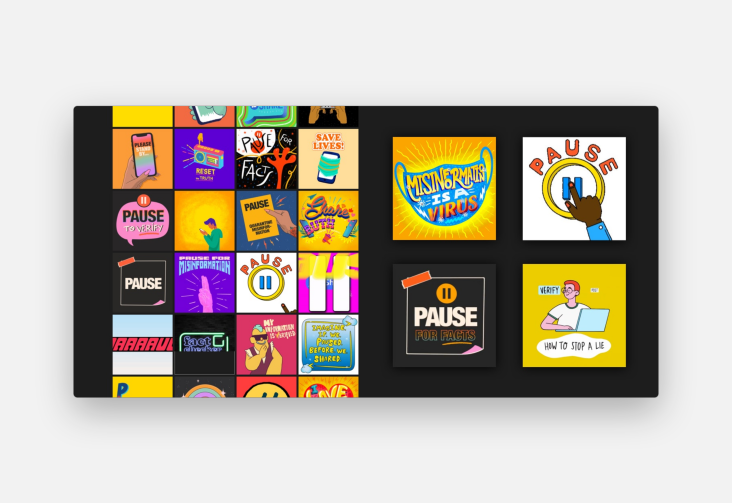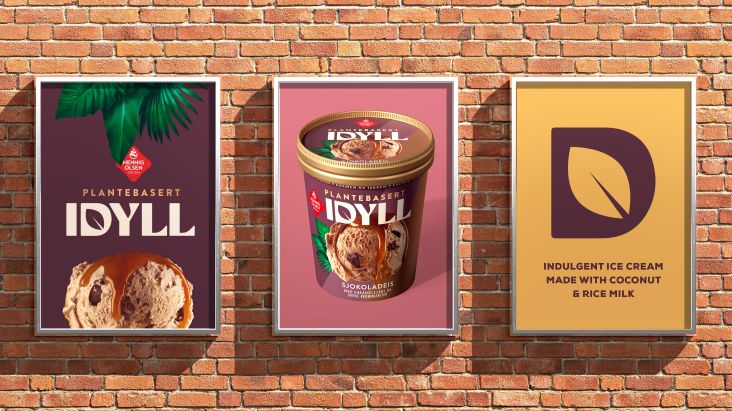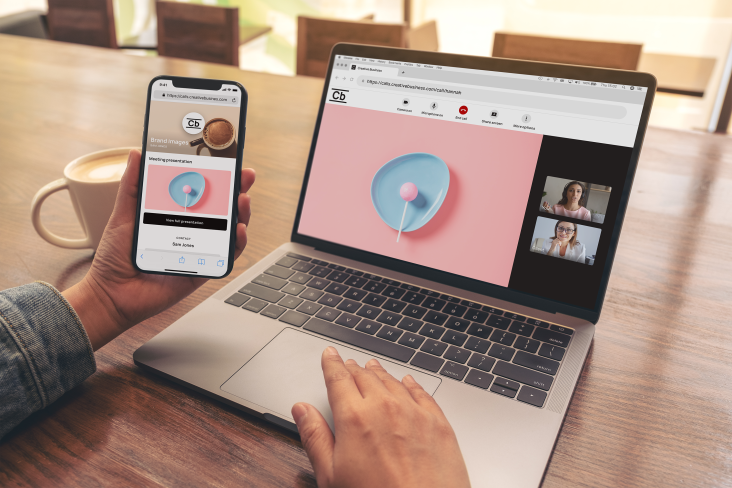How to win more freelance clients when you've quit social media
You're fed up with the trolls, the endless bile, the utter vacuity of social media. But as you tell your friends and family, "I would cancel my account, but I need it for work." But do you, really?

Image licensed via Adobe Stock
It's worth thinking about. Because the mental health benefits of leaving social media for good (not to mention the extra time you'll save for, you know, actual work) are very attractive indeed.
And it's not like posting on social media is the best way to find new clients anyway. With so much noise and so many people clamouring for attention out there, it can often be the worst.
Plus, if you quit social media – or at least dial down your usage, you won't be alone. "I left Instagram around five months ago, I rarely use Twitter, and I never use Facebook," says content writer and SEO specialist Dana Nicole. "And yet I'm fully booked. Deleting Insta hasn't negatively impacted things at all. In fact, it's allowed me to re-focus my energy on other areas of business."
Fancy following in Dana's footsteps? Then read on, as we offer ten practical tips to win freelance clients without using social media.
1. Send emails
It's ironic, really. Freelancers are constantly looking for work, and companies are constantly looking for good freelancers. But the two often fail to meet in the middle! This is why it's important to send a friendly email saying you're available, both to people you've worked for in the past and those you'd like to work for in the future.
Often, that little nudge is all you need to get work. And even if it doesn't bear fruit immediately, your email will probably get filed and remain searchable when they do need someone. In contrast, finding a Facebook post you read six months ago is a tall order indeed. (If you don't believe us, just try it!)
2. Send mailouts
Find your emails are getting ignored? Then maybe consider physical mailouts instead. If they're well crafted, people are sure to hang on to them, suggests graphic designer James Bristow.
"It's unlikely an approach will be perfectly timed, so I recommend a creative piece of printed mail," says James. "Make it good, and it's got a fighting chance of being kept for when the time is right."
3. Get featured on magazines and blogs
Another classic approach to winning clients is to go old-school PR and get your work featured in relevant magazines and blogs.
Most decent ones will have clear instructions on how to submit your work. (Ours are here. Follow them carefully.) This in itself won't automatically mean you get featured because there isn't space for everyone. But like anything, it's a numbers game: the more blogs you contact, the greater your chances of coverage.
If you succeed, not only will you boost your profile, but any natural links back to your website will boost its ranking. For this reason, it's also worth getting to know the editors and journalists of your discipline's favourite titles. Put yourself forward for comment pieces, offer to write a feature, or just keep them updated with new work.
Referrals are the secret sauce to winning new business for many freelancers. But just because you've done great work for someone doesn't mean they'll naturally recommend you to others – some need to be gently nudged.
4. Start your own blog
A good alternative to getting featured on an existing blog is to start your own, writing about your field. Once you've built up an email subscriber list, keep firing out your posts and make yourself an expert in a specific area. That way, people will know whom to contact when they need someone who knows what they're talking about.
Even if you don't have a blog, illustrator and animator Connie Noble believes that "just having a banging website" is a great way to win new clients. "Not to toot my own horn, but being able to exhibit my best work at a quick glance has really worked wonders for me," she says. "There's no point having a private website or one with only one project, though: clients want to see it all."
5. Focus on search
Social media isn't the only way to drive people to your website: far from it. "Organic search brings in over 90% of our clients and customers," says designer Mike Hindle. "Thankfully, that means I can now take a week off from the business social media pages every couple of months, without it having an impact on the work we get coming through."
6. Get referrals
Referrals are the secret sauce to winning new business for many freelancers. But just because you've done great work for someone doesn't mean they'll naturally recommend you to others – some need to be gently nudged along the way.
Writer Luc Benyon advises you: "Ask everyone you know to hook you up with their friends, colleagues and contacts for an informal coffee chat." While designer and art director Gil Cocker suggests you: "start reconnecting with people you've worked within the past; the power of recommendations are so valuable. Having an immediate level of trust has been invaluable to me when gaining new clients. After all, people buy from other people… especially when the risk is lower."
7. Visit relevant groups
Here's another fruitful place to seek out freelance clients, which not everyone thinks of. "Look for groups that relate to the field in which you want to work, on platforms like Slack," suggests designer Mike Smith. "Being a helpful voice in those groups will get you noticed, and before long, people will seek you out for work."
Motion designer Julian Brown adds: "I'm a big proponent of 'volunetworking'. Real-life volunteering with others for a common cause creates strong bonds and connections. And if it can include showcasing your marketable skills, then all the better."
8. Use LinkedIn
Whether or not you count LinkedIn as social media is a matter of debate. Either way, it's light years away from the kind of mindless posing you find on Instagram or the desperate search for likes that typifies Twitter. And lots of freelance creatives really do find clients via this service.
"I find Linked In really good for finding work," says fashion, beauty and lifestyle illustrator Niki Groom. "I recently wrote that I was open to clients outside fashion and beauty, and it led to a great corporate project."
9. Meet people in person
So far, we've talked about online alternatives to social media promotion, but perhaps you'd rather get away from the computer altogether? Well, the good news is that the oldest trick in the networking book is still available to you: going out and meeting people in the real world.
Now that society is unlocking, it's time to start arranging drinks and meetups again. Get out there and look at people in the eye; it's unnerving at first, but you'll soon be back in the swing of it. Give more than you get, genuinely support the creative community, and it's amazing how much the universe will give you back.
But how do you decide who to meet? "One idea is to grab a large sheet of paper and a Sharpie to map out your network and ideal clients, in a bubble diagram or similar," says life and business coach Helen Jane Campbell. "Then figure out how to approach each person on the list. A coffee? A postcard? Phonecall, or email? Whatever it is, the important thing is to make your ask, or offer, very clear."
10. Show don't tell
The idea that "If you build it, they will come" might sound a bit hackneyed. But cliches become cliches for a reason. So Helen's final recommendation for our list is this. "DO THE THING you want to be known for. Don't wait till you get your first client to begin. This could look like volunteering, publishing your own newsletter, holding an exhibition... But whatever it is, show, don't tell."




 by Tüpokompanii](https://www.creativeboom.com/upload/articles/58/58684538770fb5b428dc1882f7a732f153500153_732.jpg)


 using <a href="https://www.ohnotype.co/fonts/obviously" target="_blank">Obviously</a> by Oh No Type Co., Art Director, Brand & Creative—Spotify](https://www.creativeboom.com/upload/articles/6e/6ed31eddc26fa563f213fc76d6993dab9231ffe4_732.jpg)















